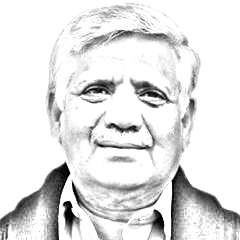After more than eighteen years of imperialist aggression and occupation of Afghanistan, the US imperialists are losing their longest war in history. They are facing yet another shameful defeat after those in Korea, Vietnam, Iraq and Syria. Their frustration from this rout is evident in their desperate attempts to unleash another massive bombing campaign and frustrate ‘peace talks’ that seem to be as miserable a failure as their earlier botched aggression.
A UN quarterly report released on Wednesday revealed that “Afghan civilians are for the first time being killed in greater numbers by US and pro-government forces than by the Taliban and other insurgent groups. The bloody milestone comes as the US steps up its air campaign in Afghanistan while pushing for a peace deal with the Taliban, who now control or influence more parts of the country than at any time since they were ousted in 2001…During the first three months of 2019, international and pro-government forces were responsible for the deaths of 305 civilians, whereas insurgent groups killed 227 people. Since 2017, the US military started quickening its operational tempo after President Donald Trump loosened restrictions and made it easier for American forces to bomb Taliban positions.” According to US Air Force Central Command, the US dropped 7,362 bombs in Afghanistan in 2018, the highest number since at least 2010.
The imperialist aggressors and the corporate media’s former Mujahideen and present day Taliban (both good and bad varieties) are two sides of the same coin. These bestial terrorists that were created, nurtured, financed, trained and armed by the US strategists in connivance with the Saudi deep state and Pakistan’s elite intelligence agency more than forty years ago. This plot was hatched and executed by the CIA. It launched the agency’s largest covert operation in the wake of a revolution that for the first time gave a ray of hope for a prosperous future to the beleaguered and impoverished people of Afghanistan. The Saur (Spring) revolution of 27 April 1978 was a leap of progress for the deprived and tormented masses of a destitute country, which for more than two centuries had been the bloody arena for the imperialists’ “Great Game” of mayhem and devastation.
In the year and a half before the Soviet armies entered Afghanistan, revolutionary measures were introduced in almost every sphere of social and economic life in the country. To ensure equality of women and eliminate unjust patriarchy, forced marriages of girls in exchange for money and goods were effectively banned
Since the dramatic events that led to the revolutionary insurrection in which the People’s Democratic Party (PDPA) of Afghanistan took power under the leadership of Noor Mohammad Tarakai, and the subsequent radical and far-reaching reforms which came in its aftermath, the corporate media and intelligentsia on a world scale have distorted and maligned this rare glorious episode of Afghanistan’s chequered history. This revolution dared to free the oppressed masses in Afghanistan from centuries of medieval despotism and brutal devastation by the imperialists.
The dominant capitalist politicians and their intelligentsia and journalists have portrayed the Saur Revolution as the product of the Soviet occupation of Afghanistan. They have criminally tried to conceal the fact that the Russian forces entered Afghanistan only 18 months after the revolutionary victory on December 29, 1979. The first two presidents of post-revolutionary Afghanistan Noor Mohammad Tarakai and Hafeezullah Amin, leaders of the Khalq faction of the PDPA, had little faith in the bureaucratic regime that ruled in Moscow. This section of the leadership of the PDPA was bitterly opposed to any foreign intervention, including by the Soviet Union. Tarakai was killed earlier on in an inner-palatial intrigue, and Hafeezullah Amin was assassinated on the eve of the Russian intervention. Even though it was not a classic socialist revolution from a Marxist standpoint, nevertheless it struck a blow against the region’s feudal drudgery, tribal primitiveness, religious oppression, capitalism and imperialism as no other revolutionary act had ever previously accomplished in South Asia. In the year and a half before the Soviet armies entered Afghanistan, revolutionary measures were introduced in almost every sphere of social and economic life in the country. To ensure equality of women and eliminate unjust patriarchy, forced marriages of girls in exchange for money and goods were effectively banned. The landed estates of the feudal lords, clergy and royal family were expropriated without compensation and redistributed to landless peasants. In addition, in the agrarian sector peasant cooperatives were established and equitable distribution of water introduced. All debts, loans, mortgages and revenues that had been imposed on generations of poor peasants by usurers and big landlords were annulled forthwith.
Major literacy programmes were launched. By 1984 one and a half million people had finished literacy courses, and in the same year, 20,000 literacy courses were functioning throughout the country enrolling 377,000 people. The target was to eradicate illiteracy in urban areas by the year 1986, and by 1990 all over Afghanistan. An important act of the revolution was to overthrow the oligarchy of capital to introduce such radical measures. The Saur Revolution proved yet again that in the neo-colonial countries not even the basic tasks of the bourgeois democratic revolution could be accomplished under the rotten capitalist system.
The writer is the editor of Asian Marxist Review and International Secretary of Pakistan Trade Union Defence Campaign
